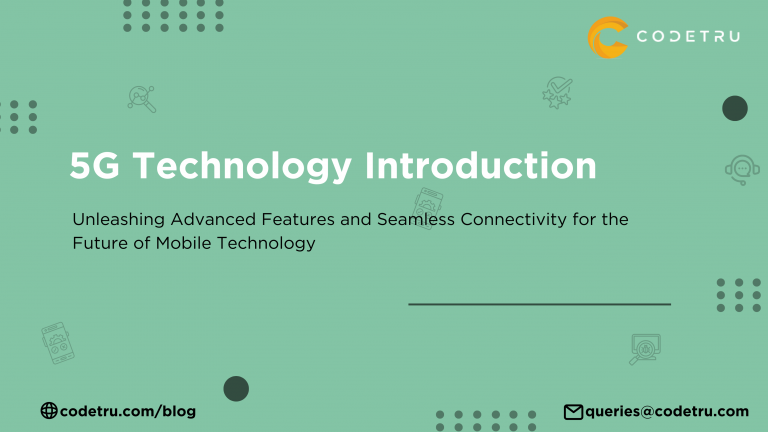Introduction to 5G
The technological advancement in the mobile and wireless industry in the past 15 years has been splendid. The growth in this sector is so exponential that many mobiles have WLAN adapters. With the momentum of the innovation that is going on, shortly there might be mobile phones with WiMAX adapters along with their 3G, 2G, WLAN, Bluetooth, and other adapters. IPs are being used for both 2.5G and 3G, Public Land Mobile Networks (PLMN) on one side and WLAN on the other have raised the eyes of research on their integration.
Seamless integration of Cellular networks such as GSM and 3G is the primary focus of the 4G. Multimode user terminals are seen as a must have for 4G. These have different security mechanisms and different QoS support in different wireless technologies which remains as a challenge. To combat this situation, integration among different wireless networks such as (e.g. PLMN and WLAN) is in practice even today. However different wireless networks from a single terminal are used exclusively, which means there is no combination of different wireless access technologies for the same session.
The Open Wireless Architecture (OWA) is designed with a vision of assisting open baseband processing modules with open interface parameters to support various existing as well as future wireless communication standards. The OWA’s schemes main target is the MAC/PHY layers of future (4G) mobile terminals. The 5G terminals will have software-defined radios and modulation scheme as well as new error-control schemes that can be downloaded from the Internet on the run.
What is 5G Technology?
5G Technology stands for 5th Generation Mobile technology. 5G technology is considered to be the next game changer in mobile technology which will allow people to use their cell phones with high bandwidth. Considering the follow-up of 4G network l, the 5G is made up of something called Cells, which constitute the cellular networks, in which the service region is distributed into small geographical areas. This is considered the cutting-edge technology that this sector has ever used and is considered a high-value technology. Today’s mobile users are pretty much aware of the cell phone (mobile) technology that use and would love to stay updated on the same. The 5G technology is a package with all types of advanced features which will make it the most powerful and in-demand science that will be sought after in the coming days.
The way that innovation and technology are been roped into the new cell phones is priceless. 5G technologies that are now being experimented on handheld phones offers more power and features than at least 1000 lunar modules. A user can now simply hook their 5G technology cell phone to their Laptop and get broadband internet access. Imagine having a cell phone with 5G technology along with your usual features of the camera, MP3 recording, video player, huge phone memory, speed dials, audio player, and many more. This can be a breakthrough for all ages especially children who would enjoy some cool benefits of this technology.
What 5g Technology Offers?
5G technology is the most talked about and the new revolution in the market. With this use of 5G, the user can now experience quick downloads through increased speeds and higher bandwidth. With this functionality, these 5G technologies along with worldwide cellular phones can be used as internet service providers that can be used on laptops and desktops.
5G technology stands unique and more advanced than the others due to its data capabilities. It can bind unrestricted call volumes and infinite data broadcast within the latest mobile operating system. 5G technology is going to be the next big thing because it can handle the best technologies and offer priceless handsets to its customers at reasonable prices. 5G technologies have all those capabilities and features to rule over the world market. This super useful technology can at a time support Software and Consultancy. The Router and switch technology used in the 5G network provide higher connectivity.
The 5G innovation circulates web access to hubs inside the structure and can be sent with an association of wired or remote system associations. The 5G terminals will have programming-characterized radios and adjustment plots just as new error control conspires that can be downloaded from the Internet. The advancement is seen towards the client terminals as a focal point of the 5G versatile systems. The terminals will approach distinctive remote advancements simultaneously and the terminal ought to have the option to join various streams from various innovations. The vertical handovers ought to be maintained at a strategic distance because they are not doable for a situation when there are numerous innovations and numerous administrators and specialist co-ops.
In 5G, each system will be liable for dealing with client versatility, while the terminal will settle on the last decision among various remote/portable accesses to organize suppliers for a given help. Such an option will be founded on smart middleware on the cell phone.
FAQs on 5G Technology
1. What is 5G technology and how does it differ from previous generations?
5G technology or 5th Generation Mobile technology is a major breakthrough in mobile communications, providing more bandwidth, faster download speeds and lower latency compared to 4G. It uses networks of smaller cells to provide and support wider information integrating disparate technologies for seamless communication.
2. What are the key features of 5G technology?
Key features of 5G technology include faster download and upload speeds, increased bandwidth, reduced latency, increased capacity for more connected devices, and the ability to support advanced applications such as IoT, autonomous cars and smart cities
3. How does 5G technology improve user experience?
5G technology enhances the user experience with high-speed Internet speeds, high-quality video, enhanced gaming experiences, and more reliable connectivity to smart devices Enables application and new services requiring real-time data processing and high-speed communications.
4. What are the potential applications of 5G technology?
Possible applications of 5G technology include smart cities, autonomous vehicles, telemedicine, virtual and augmented reality, enhanced mobile broadband, industrial automation, and the Internet of Things (IoT). This application benefits from the high speeds, low latency and great connectivity offered by 5G .
5. What are the challenges of implementing 5G technology?
Challenges in deploying 5G technology include the need for significant infrastructure upgrades, spectrum allocation, regulatory approvals and addressing security concerns in addition to high deployment costs and the need for a corresponding machinery needs to be developed.






